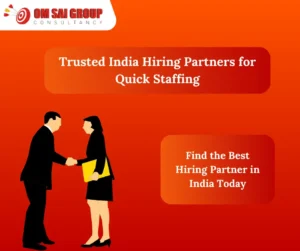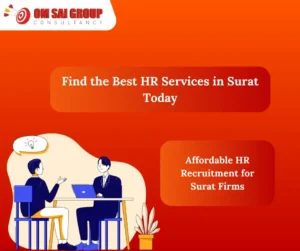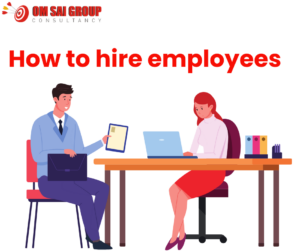Placement Office in Jalandhar

Best Placement Office in Jalandhar Introduction In the ever-evolving world of business, acquiring the right resources is more difficult than it has ever been. For businesses in Jalandhar looking to build an efficient workforce for sustainable growth, collaborating with a specialist Placement Office in Jalandhar might provide the competitive advantage needed. Om Sai Group Consultancy is one of the top Recruitment Agencies in Jalandhar, providing all-round Employment Services Jalandhar actively seeks for to fulfill their hiring requirements in a timely and qualitative manner. With the technological advancement and fast growing business options in Jalandhar, the need for trained employees in many fields has risen quite sharply. It does not matter if you are a new company looking to hire entry level employees or if you are a well established company looking for highly qualified professionals, having a dependable Local Hiring Partner Jalandhar can greatly improve your organization’s success rate. Top Reasons Employers Should Partner with Placement Office in Jalandhar The move to engage with Staffing Solutions Jalandhar has many positive impacts on employers. These agencies have an encyclopedic knowledge of the local market, meaning that they have wide networks which contain relevant and qualified prospects from different fields. A qualified Hiring Agency Jalandhar knows the local job market, competitive pay, and candidate’s profiles making it easier to place the right talent in the right jobs in the shortest time possible. Talent Acquisition Jalandhar professionals also specialize in screening and evaluation so that only the relevant candidates reach the interview stage. This saves invaluable time and resources and boosts the quality of hires. Moreover, reputed Manpower Consultants Jalandhar have access to candidates who are not looking for jobs at the moment but are willing to consider good offers. The advantages of working with placement agencies understates cost effectiveness. If you consider the time, effort, and resources spent on traditional recruitment, working with Professional Recruiters Jalandhar is usually more cost-effective with better outcomes. How a Local Recruitment Placement Office in Jalandhar Can Speed Up Your Hiring Process In today’s rapidly changing corporate world, time-to-hire is a key performance indicator. Employer Hiring Services Jalandhar providers focus on speeding up the recruiting and hire processes through their well-placed systems and processes. They routinely update their active candidate databases, conduct ongoing market research, and have streamlined evaluation procedures that can reduce hiring timelines from months to weeks. Local recruitment partners know the urgency of a business to fulfill its needs and can readily allocate resources to find suitable candidates. Their networks with schools and colleges, professional bodies, and other industry contacts greatly aid in candidate sourcing. The time advantage is most essential for companies looking to add critical hires or expand their teams at a rapid pace. Advantages of Outsourcing Recruitment to a Placement Office in Jalandhar Hiring a specialized Placement Office in Jalandhar shifts the burden of fulfilling open positions to the recruitment office, thus allowing companies to concentrate on their primary business functions. Workforce Solutions Jalandhar invests in developing advanced technologies and methodologies in recruitment, which gives these suppliers a marked advantage over other businesses that seek to invade this specific market niche. This model also provides enhanced staffing agility with access to temporary and contract workers. With Temporary Staffing Jalandhar and Permanent Staffing Jalandhar services, businesses are able to respond to various project, seasonal, or cyclical demands without the added administrative workload of these processes. Hiring Solutions Related to Industry Available In Jalandhar For different sectors, Jalandhar’s vast industries need to have a tailored recruitment strategy. Providers of Industrial Placement Services Jalandhar are aware of the region’s key sectors such as manufacturing, healthcare, information technology, education, and others. They know how to customize these placements to the needs of the industry. Om Sai Group Consultancy provides specialized solutions that resolve the specific challenges and needs of the industry. Executive Search Firm Jalandhar services focus on fulfilling the apex positions that demand greater qualification and seasoned skills. These services are integrated with comprehensive candidate appraisal, references, and verification of relevant past employment to the organization’s ethos for successful leadership placements. Why Your Business Needs a Reliable Talent Acquisition Partner In Jalandhar Recruiting talent in today’s world is more challenging than simply advertising positions and conducting interviews. A trusted Human Resource Consultants Jalandhar will bring added value by improving business goals and forecasting future hiring. This helps plan comprehensive business talent strategies. In addition, professional recruitment consultants have up-to-date information on employment and compliance laws as well as business practices which ensures that all procedures are compliant to legal and pragmatic ethics. This ensures that the company’s operations are protected against legal risks while safeguarding professional integrity during recruitment. Cost Saving Recruitment Methods for Companies in Jalandhar Smart companies understand that finding and hiring talent is an investment. Sometimes utilizing Corporate Hiring Agency Jalandhar services proves more economical than using DIY methods since corporate hiring agencies factor in all costs such as advertising, screening, interviewing, onboarding, etc. Placement agencies also minimize bad hires, which are hires that don’t work out, as much as companies don’t want to admit it, losing a bad hire and their perceived value can be incredibly expensive. These agencies use specially trained personnel for candidate evaluation and matching and, thus, greatly enhance the success rates of placements. How We Assist Employers in Jalandhar to Faster Source Skilled Local Talent Modern Job Sourcing Agency Jalandhar providers have put in place sophisticated recruitment technologies like applicant tracking systems, candidate relationship management tools, and data analytics which allow for the quick identification and engagement of top talent. These technologies make candidate sourcing, communication, and tracking recruitment metrics much easier. Campus Recruitment Services Jalandhar providers also foster deep connections with local education providers which allows them to get new talent and graduates who are ready for work and eager to fill local positions. How Placement Consultants Help Manage Human Resources for Companies In Jalandhar Businesses in Jalandhar can now benefit from placement consultants as they serve as vital HR assets. Placement consultants help companies streamline their recruitment processes, increasing overall human resource efficiency. They offer valuable intelligence on the market, benchmarking, salary, recruitment trends, and more, enabling businesses to make strategic hiring decisions. Placement Office in Jalandhar Furthermore, these consultants take care of









